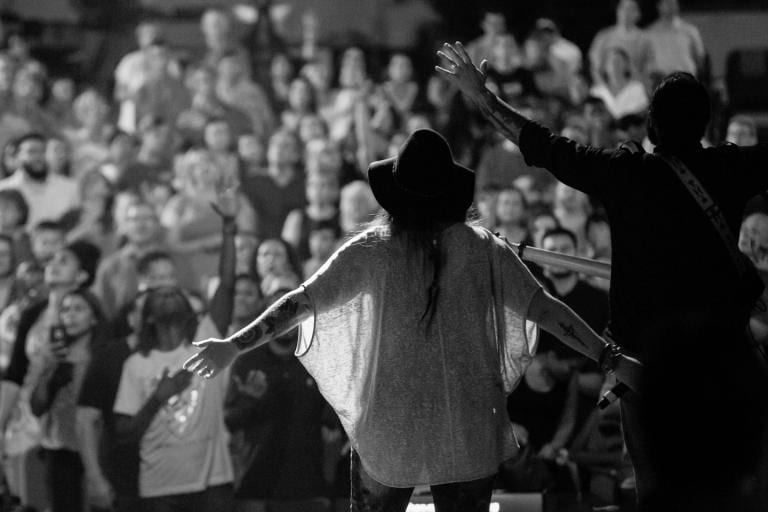By: Jonathan Aigner – patheos.com – November 20, 2020
Whenever I talk about how pop worship music is inappropriate for Christian worship, I get comments accusing me of making hasty generalizations, and directing me to “fresh” and “new” pop recordings of treasured hymns. “See?!?” these people will usually say. “You can sing good theology but in a modern style that connects with younger generations!”
I want to mention that if two generations of parents and churches had done their part, hymnody sung by choir and congregation, usually accompanied by organ, would “connect” just fine, although I reject that use of the word. If it is unfamiliar, all that has to happen is for it to be reintroduced with patient training and explanation?
Why must it be reintroduced? Isn’t it just a stylistic difference?
No, it isn’t just a stylistic difference, and that’s not difficult to ascertain by anyone willing to honestly evaluate the situation.
Since my first viral post, back in 2014 when it was still possible for a blog post to actual go “viral,” I’ve been saying this. Sometimes people ask why I’m still saying it. The answer is simply that some people still need to hear it.
It will anger some people to hear me say this, sure. That’s okay. They’re the ones who need to hear it most.
Pop music is not written to be sung by a congregation. It is not textually driven, which is necessary for a poem set to music to function as a hymn. Even if the text is good and important, the music is driven by a band, usually some version of a rock band, and the vocals are handled either by a soloist or a small ensemble. The singing is done very individualistically, usually with heavy ad libbing and soloistic singing. The singers are generally theatrical, even when they don’t mean to be. It’s the style of music. Their favorite pop singers sing this way, and so when this sort of music is done in church, the singers comport themselves likewise. More technically, and I’m drawing on my own training as a vocalist here, it is almost often sung with a high-larynx position, which creates a feeling of emotive singing that, unfortunately, often borders on being either whiny or glib.
If you’re singing a hymn text in this style, you’re not really singing a hymn. You’re singing a pop worship song that happens to use old words. Those words may be good, but they aren’t being done in a style that unifies the congregation. They aren’t being done in a way that emphasizes the text. They’re being performed for an audience, some of whom might be crooning (or, more to the point, emoting) along from their pews or stadium-style seats, but who aren’t being trained in the discipline of singing.
Hymns sung in liturgy are usually accompanied by an organ, which, played well, will draw the singing out of a congregation and articulate the rhythm of the text. There is no ad libbing by the singers, either in the choir or congregation, and there is no soloist wailing into a microphone. The point of the exercise is singing together as one voice a strong theological text that complements the liturgical day and lectionary readings. It isn’t to give a good theatrical performance. It isn’t to express emotion toward God, and though emotions can certainly be stirred by singing fabulous hymn texts, stirring them isn’t the point.
The fact that we’re raising children in churches that no longer sing like this is a tragedy and a travesty. We are depriving our children of learning to raise their voices in singing doctrinally rich texts in a liturgical environment where authenticity is based on the truth of the Word of God, not in what the music makes them feel.
”But Jonathan! Our churches our shrinking! Attendance is declining! We have to reach out to younger people with music they can relate to.”
That strategy is fifty years old. Look around. Is it working?
Nope.
It’s a failed experiment that has impoverished two generations of Christians.
So let’s do better, shall we?
Let’s emerge from this singing hiatus most us are in with a renewed effort to recover good hymn singing, and more importantly, teach our children how to do it.
Down with pop worship.
To see this article and read others like it, choose to read more.
Source: Why Singing Hymns the Traditional Way is Better than Singing the Pop Worship Way | Jonathan Aigner
 Listen Online
Listen Online Watch Online
Watch Online Find a Station in Your Area
Find a Station in Your Area








 Listen Now
Listen Now Watch Online
Watch Online
